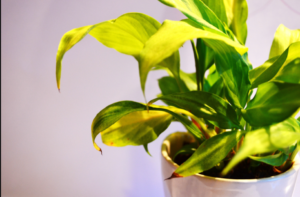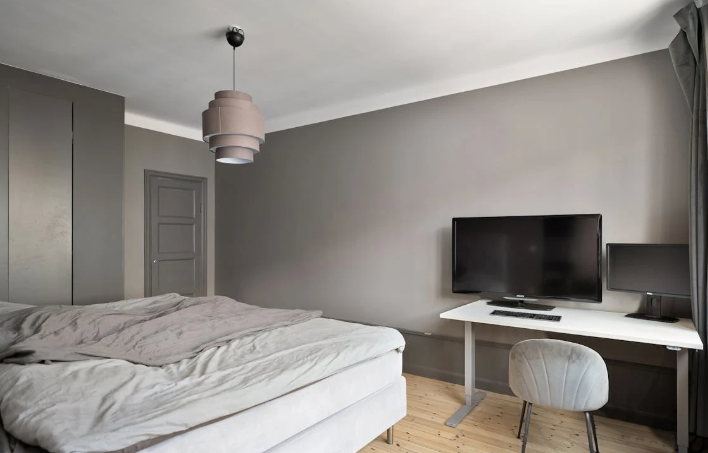Why Are Your Indoor Plants Turning Yellow? Causes and Fixes
Why Are Your Indoor Plants Turning Yellow?

(Why Are Your Indoor Plants Turning Yellow) Indoor plants bring life to your home, but seeing their leaves turn yellow can be a frustrating experience. Yellowing leaves are often a plant’s way of signaling stress. Let’s explore the common reasons behind this issue and actionable solutions to help your greenery thrive.
1. Overwatering: The #1 Culprit (Why Are Your Indoor Plants Turning Yellow)
Overwatering is one of the leading causes of yellow leaves. Plants need water to survive, but too much can suffocate the roots, leading to yellowing and wilting.
- Signs: Yellowing starts from the lower leaves; soil stays consistently wet.
- Solution:
- Ensure your pots have proper drainage.
- Allow the topsoil to dry before watering again.
- Use a moisture meter to avoid overwatering.
Learn more about proper watering techniques.
2. Underwatering: A Common Misstep (Why Are Your Indoor Plants Turning Yellow)
Just as overwatering can cause yellowing, underwatering can stress plants and lead to dehydration.
- Signs: Leaves are dry, yellow, and crispy at the edges.
- Solution:
- Set a consistent watering schedule.
- Use pots with good soil that retains moisture without waterlogging.
3. Insufficient Light (Why Are Your Indoor Plants Turning Yellow)
Light plays a crucial role in photosynthesis, and without it, plants struggle to thrive.
- Signs: Leaves yellow uniformly; plant growth slows.
- Solution:
- Move the plant closer to a window with indirect sunlight.
- Use grow lights if natural light is insufficient.
Discover how to choose the best grow light for indoor plants.
4. Nutrient Deficiencies
Yellow leaves can indicate a lack of essential nutrients like nitrogen, potassium, or magnesium.
- Signs: Yellowing starts from the tips or edges; veins remain green in some cases.
- Solution:
- Use a balanced liquid fertilizer.
- Test your soil to determine its nutrient levels.
5. Pest Infestations
Pests such as spider mites, aphids, and mealybugs can drain the vitality of your plants, causing yellowing.
- Signs: Tiny insects on leaves; webs or sticky residue on plants.
- Solution:
- Spray the plant with a neem oil solution.
- Isolate the infected plant to prevent spreading.
Explore natural remedies for pest control.
6. Temperature Stress
Indoor plants are sensitive to sudden temperature changes or drafts.
- Signs: Yellowing often occurs after moving the plant or during seasonal changes.
- Solution:
- Keep plants away from direct heat sources or cold drafts.
- Maintain consistent indoor temperatures between 65-75°F (18-24°C).
7. Root Bound Plants
Over time, plant roots can outgrow their pots, leading to stress and yellowing leaves.
- Signs: Roots grow out of the drainage holes; yellowing appears on older leaves.
- Solution:
- Repot the plant into a larger container with fresh soil.
- Prune any damaged roots during repotting.
How to Prevent Yellowing Leaves
- Understand Your Plant’s Needs: Research the specific requirements of your plant species.
- Monitor Soil Conditions: Use well-draining soil and avoid compacted mixtures.
- Inspect Regularly: Check for pests, mold, and other visible stress signs.
- Rotate Plants: Ensure all sides receive equal light exposure.
Common Indoor Plants Prone to Yellowing
- Snake Plant: Overwatering can quickly turn its stiff leaves yellow.
- Pothos: Sensitive to inconsistent watering.
- Peace Lily: Easily stressed by temperature changes and overwatering.
Conclusion: Revive Your Greenery
Yellowing leaves don’t mean the end of your plant’s journey. With the right care and attention, most issues can be resolved, bringing your indoor greenery back to health. By understanding the causes—whether it’s watering mistakes, pests, or light deficiencies—you can ensure your plants thrive.




Leave a comment